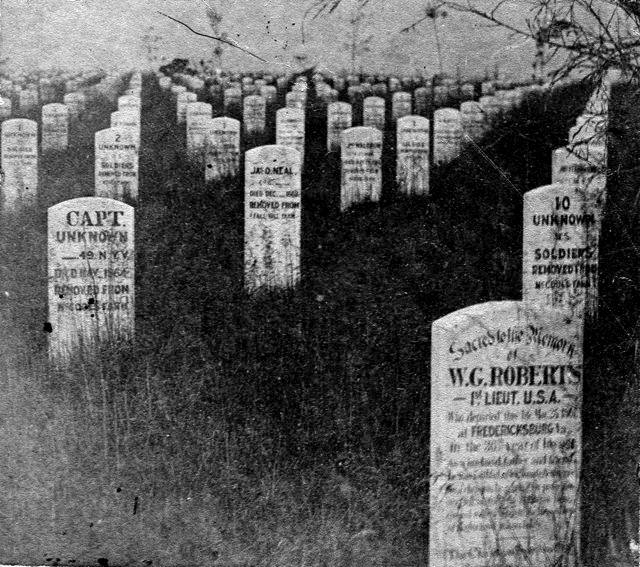I’m honored that my article on Fredericksburg National Cemetery is the Memorial Day feature for The New York Times Disunion column. The source of the Walt Whitman quotes in the article is Memoranda during the War, specifically the essays, “Typical Soldiers,” “The Million Dead, too, summ’d up” and “No good Portrait of Abraham Lincoln.” (The “No Good” essay includes a splendid rant on corruption.)
Memoranda has some troubling passages. As Bob Blaisdell put it in his introduction to my edition, when Whitman relies on “hearsay, history, or received opinion” as in the “Notes” that conclude the Memoranda, he can lapse into “dime-a-dozen prejudices.” But mostly the book draws on Whitman’s direct experience and, as Blaisdell says, “What has lasted and will last are the vivid, body-electric recordings of men and moments he collected in his little homemade notebooks.”
Those first-hand moments began when Whitman got word that his brother George was wounded at Fredericksburg in December 1862. He left New York to go to him. Although Whitman found, to his relief, that George had sustained only a minor shrapnel wound, he didn’t go home. The suffering at the field hospital at Falmouth (a house called Chatham Manor) made him a devoted companion and nurse to the Civil War wounded and ill, first around Fredericksburg, then in Washington, DC. Although Whitman at times expressed deep rage toward the Confederacy, his compassion toward individual soldiers transcended divisions of North and South.
The quality that infused Whitman’s care for the soldiers is for me the most poignant aspect of his writings: a tender and earthy love that proves the union of human clay and human spirit. In “The Million Dead” Whitman unites the Civil War dead, their bodily and spiritual remains, with our land. Those who fought on the land literally become of our land, abiding not only in memory but in substance, sustaining us.

Following is a picture of the Fredericksburg National Cemetery showing the wooden headboards that were replaced by the granite markers. The picture was taken by local photographer F. Theodore Miller, probably in the early 1870s. Collection of Jerry H. Brent, executive director of Central Virginia Battlefields Trust.
Sources: Walt Whitman, Memoranda during the War | Whitman Archive | Chatham Manor NPS |
Other Leaves of Grass posts on Whitman and Civil War witness trees: Whitman and the Witness Tree (at Chatham); a quote from Whitman with photos I took at Gaines Mill
